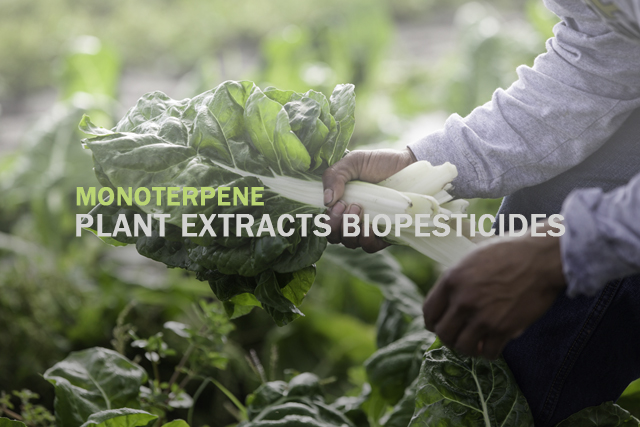Industry News, Agriculture & Feed, Biopesticides
Development & Application of Plant Extracts Biopesticides and the Active Ingredients

Industry News, Agriculture & Feed, Biopesticides

Biopesticides is the trending on agriculture industry. According as the delimited by EPA, the types of biopesticides identified as the category with Microbial pesticides, PIPs (Plant-Incorporated-Protectants), and Biochemical pesticides. As describe of Biochemical pesticide are naturally occurring substances that control pests by non-toxic mechanisms. Conventional pesticides, by contrast, are generally synthetic materials that directly kill or inactivate the pest.1
In China, biopesticides are legislated as Microbial pesticides, PIPs, Biochemical pesticides and Plant extracts pesticides. Plant extracts pesticides are produced by active ingredients, volatiles and secondary metabolites from natural plants2 that interference the reproductive and feeding behaviors of insects. The products can fall into different pesticide classes3:
> Insect growth regulators
> Feeding deterrents
> Repellents
> Induced resistance
> Bioherbicides
Plant extracts biopesticides are classified by the active ingredients4, they include:
> Alkaloids
> Plant essential oil
> Light activated toxicity
> Flavonoids
> Terpenes based
Foreverest™ Terpenes Based Ingredients, such as Terpinen-4-ol can fumigate pests. The sesquiterpenes can interfere the behaviors of pests. Active ingredients and essential oils are natural extracted from pines and other plants, they benefit with rich in resources of China. And the eco superior in no harmful residues and biodegradable for earth, water, human and animals. The advanced IPM management will against pests resistant pesticides.
In the other hand, plant extracts biopesticides can regulate plant growth. Some active ingredients can act as effective contact through a variety of mechanisms such as disrupting cell membranes in plant tissue, inhibiting amino acid synthesis, or precluding production of enzymes necessary for photosynthesis3.
1. Types of Pesticides, US EPA
2. Policy No.10, 2.3.5, PRC MOA
3. Biochemical biopesticides: Plant Extracts, BPIA